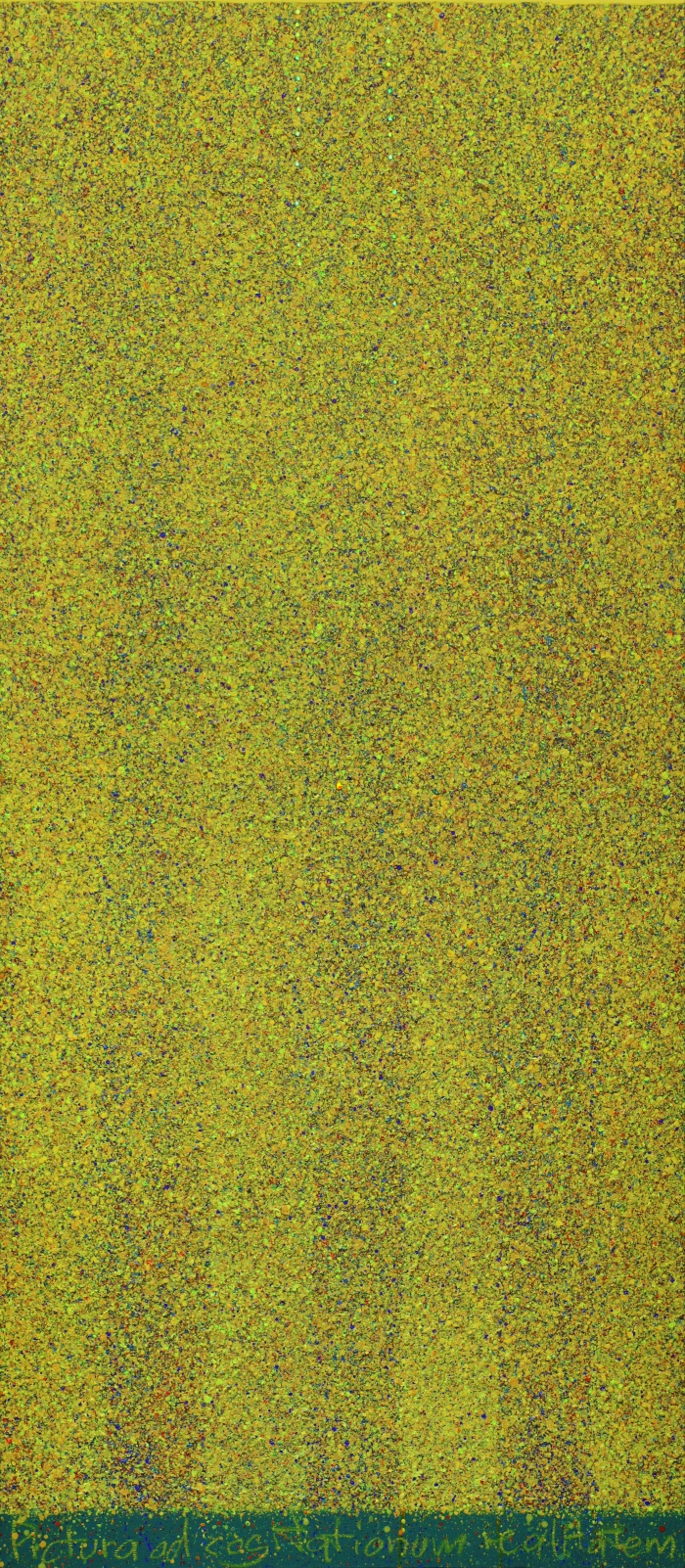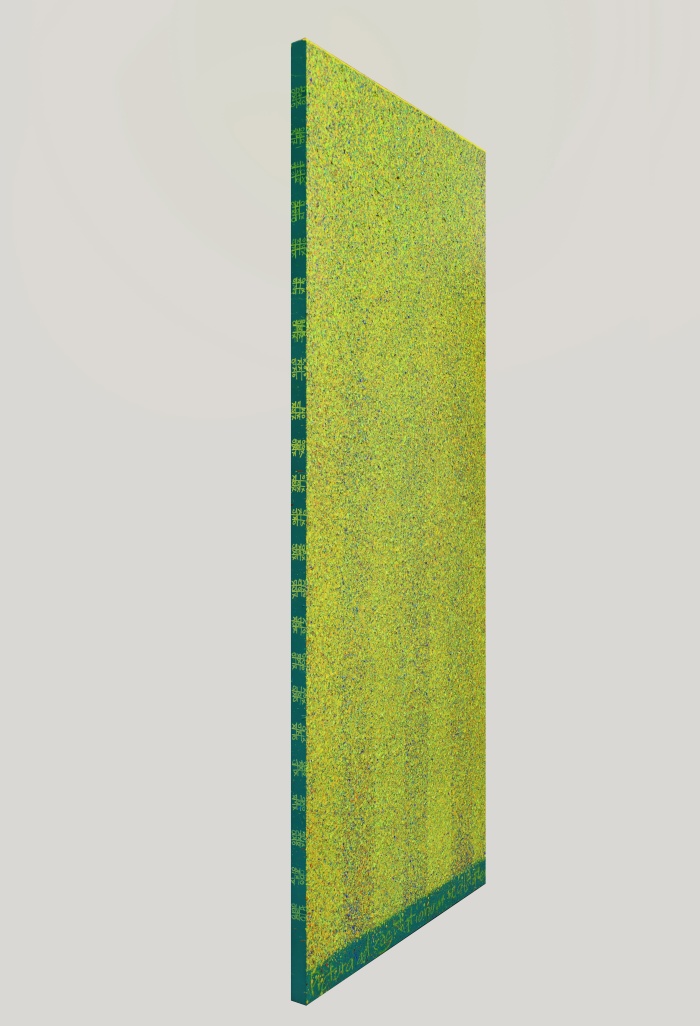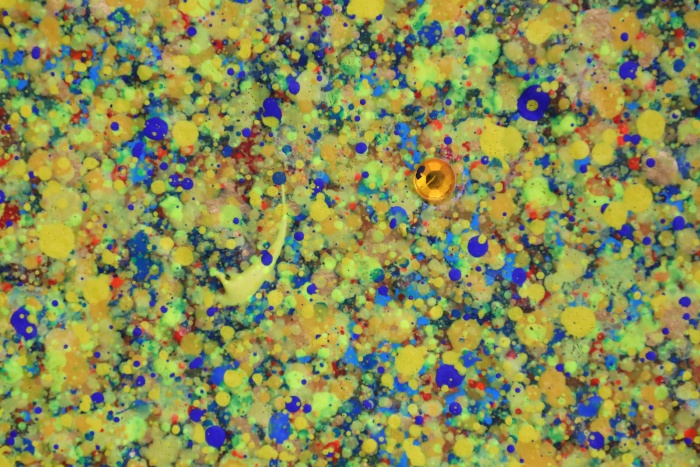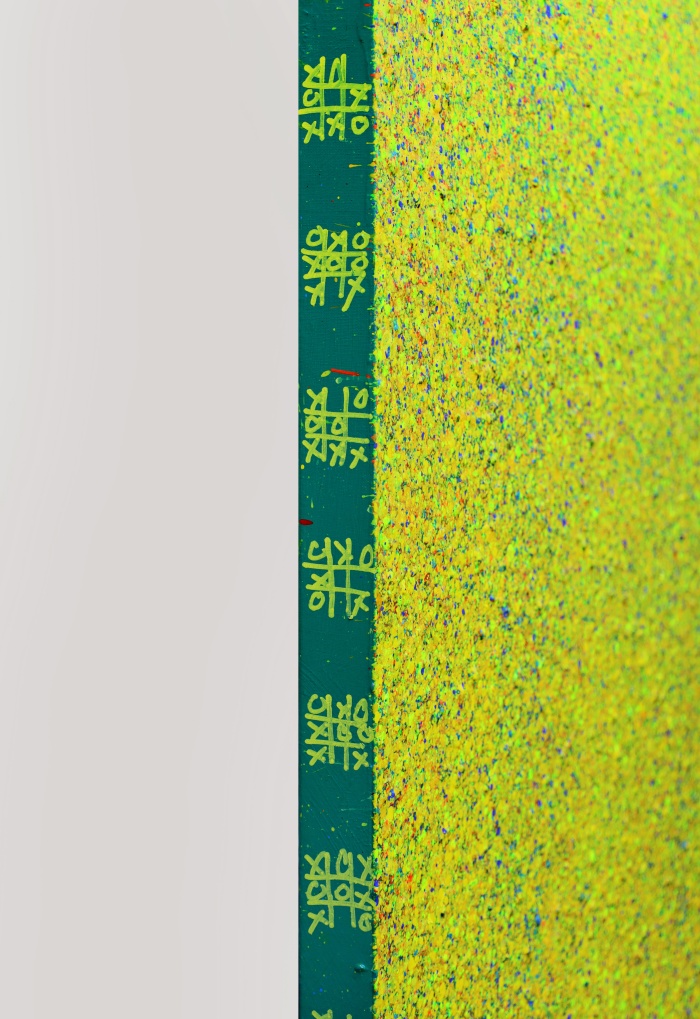First and foremost I wish to express that I am writing this article as a practising non-Marxist and to a similar degree a non-liberal and non-conservative. Because first and foremost I am interested in personal development through art. In my opinion it provides a unique area in which we are free to try to escape direct reactivity in favour of extended experiences and studies which would not be possible in the meanders of everyday life. Only through art can we try endure the dynamic, complex and multidimensional existence. Wasting that phenomenon for the purpose of improving our reality seems fundamentally misplaced. There are far more effective ways to do that. We already are conscious how faint the effects of political art are (excluding neo-fundamentalist mobilisation). Assuming such a stance of course makes it difficult to find a place in the political space of our country which is reduced to passionate conflict of extremities. Therefore, I appreciate the invitation of the editorial office to discuss beauty even more.
I will not be writing about historic changes in understanding of beauty because… there is no need to. For a great majority of contemporary people the history, metaphysics, universal ideologies, theories are no longer a reference point as everyone’s focus is on the here and now. Everydayness. Mass culture, perhaps the only form of culture that exists (because what is the actual difference between subversive kitsch from genuine kitsch, and between a clinament and scribbles?) works just fine without those superstructures. All its opportunistic drifting requires is fashion, ad campaigns and interim ‘righteous frenzies’. Beauty, or perhaps only its myth and a surrogate, has been incorporated into the marketing culture which is the economy of managing basic emotions. It does not transcend per se as much as it makes us hostage of our conditions and urges. I write these depressing statements without enthusiasm. What is beauty in the present times? What of its baggage of subtext and promises? The former division into beauty of salvation, of transcendence, of significance and real beauty has become faint.. There are only few lucky ones left who are still capable of admiration and contemplation. People who are at the same capable of escaping the lethargy of omnipresent agonistic distinctiveness and radicalism. Today beauty has become functionalised. It does not liberate, does not challenge but mostly disorients, exposes to temporary manipulations, It became a medium of advertisement, marketing, sociotechnics. By experiencing it we instinctively feel worried that someone uses the moment of bedazzlement to sell us a vacuum cleaner or enlists us into a political party. Apart from that we are infuriated by the mass of endless redefinition and modernisation which change anything into everything even more feverishly and cheerfully. Everyone is free to define beauty differently. At the same time technical capabilities and professionalism of PR make it increasingly easier to engage in mimicry and pretending. We can effortlessly simulate not just beauty, but also intellect, prominence, creativity, empathy.
Simply put: each era has its own version of beauty. Today we also have the ‘forbidden’ beauty because it apparently distracts us from poverty, violence (which we substitute with[1]). It is the impossible beauty because apparently the world uses only variabilities to exclude contemplation and replaces it with non-obligating attraction. Speculative beauty as an investment but also expert mode. Marketing beauty drifting along with fashion. Functional beauty framed with liminal elegance. Democratic beauty, which is… disco polo. And of course irrelevant beauty – as a blurry staffage of anti-essentialism, micrology, cultural constructionism, etc. There are two ways out of this: to regard beauty as a relic of the past or fight the present times because of their reductionism. I have chosen the latter which does not mean I am fighting for the return of the past. I believe that further changes in art, its further redefinition or undefinition are not as important as art in its full ability here and now.
By seeking a change into spontaneous creativity art disposes of its self-description. It does not become a promised field in free creativity but a hostage of binding meta-narratives: of the market (and its logic of unimportant news), mass media (changing art into an attractive anomaly), art world expert system and politics. Let us also add that the spontaneity itself has proven itself to serve the simplest and unaware schematics. There are several strategies of escaping the contemporary clinch and none of them are particularly good. To start with: faith that adoration is salvation and heroically adhering to traditional foundations in hope of their ultimate stability. And waiting for a swift apocalypse. And for now it is the laborious discernment of true beauty and false beauty. The misfortune of such a stance involves mostly the issue that in the end we are forced to defend this spiritual beauty in the realistic mud of manipulation. Sometimes even legitimate or noble. Furthermore, we run into the compulsion of negating everything new because the actual rational dispute about what is better is excluded with even the power of today’s ‘speed of disappearance’ (Paul Virilio) and the convulsions of public opinion. We are also placing ourselves in opposition to increasingly hierarchised art centres which monopolise the opportunist definition of what is up-to-date and wordly (so called art-bay).
Included into the cult of freedom, creativity, social efficiency, among others, the contemporary art has given up on beauty almost entirely. There is a viewpoint that nearly the entire creativity of the previous century implemented the aesthetics of exaltation, which is the tragedy of the impossibility of beauty. It has been replaced by other “foundations”: expression, authenticity, criticism, engagement. The sugar coat of PR was opposed by artists with the use of their negatives: vulgarity, obscenity, pornography, provocation. Maybe they were simply forced into this as they merely attempted to prove their civil usefulness. In short, they attempted to save themselves from the poetics of sensitivity (sublimation) with the use of politics of sensitivity, which is functional desublimation, creative destruction (Asger Jorn), post-aesthetic blob, etc. Alternatively they tried forced re-education and silencing those with different tastes (so called no-platforming, repressive tolerance). Art as combat is unwittingly engaging in Marxist traditions. It is now haunting us with its phantom in form of cultural constructionism created with the use of performative agonism. It generates a new ideal of revolutionary beauty as justified hatred. Artists who resort to it mostly know how to fight for freedom, art or emancipation but usually they do not know how to implement or experience it.
Imbalance in the traditional complementary balance of culture (practising, quality) and civilisation (effective adaptation through technology, law, etc.), led to attempts of identifying the new global culture with civilisation of functional handiness and plasticity (Catherine Malabou). That way the domination of environmental paradigm was established. A humanist subordinated to this model abandons motivation in favour of causality. It is about understanding (also of art and beauty) and not about experiencing. Consequently, the beauty of the previous century was usually described via social discourse, external in relation to art. Most importantly the selflessness and wholeness were rejected in favour of participation and fragmentary temporariness. In fact, selflessness should assume a new form of relationship towards the complex multidimensionality in relation to which the interim selflessness appears to be absurd in the first place. Another determinant is the relevance of beauty. Currently it is replaced by anti-essentialism and freedom of cultural constructionism. This is also done unjustly, considering the grim consequences – we are sinking in empty subjectivism and performative agonism which have to be concluded with the dominance of impudence and recognition of cunning as the only cultural competence. Maintaining the notion of relevance, truth (as an optimum or seeking it, not as possessing it) and the resulting hierarchisation is mobilising because it forces endless reflection and dispute, the deliberation. I am not afraid of writing about hierarchisation because although I appreciate various graces of anti-essentialism I also notice its one minor flaw – it is impossible in practice because we always evaluate and assess, even unconsciously. At the same time unconscious activity does not imply freedom. It is closely related to the issue of freedom. The idea that we could be able to reject all conditions is simply insane (what about breathing?). Those which remain will (de)form us with greater intensity. Another idea to reject the cultural oppressions in favour of spontaneity only changes us into butlers of urges and a hostage of sexuality. Yet another idea associating freedom with rubble of tradition is simply ridiculous. Because with even small knowledge of history monsters and hordes will not escape this heap of debris. Furthermore, a rhetoric pretending to dispute ‘the freedom of progress with the oppression of conservatism’ is not productive. The condition for discussing arguments is the recognition that it is a dispute of various visions of freedom. I will not write about that in more detail because everyone will defend one’s own idea of freedom, which is whatever they find easier or more pleasant. It is time to escape the traditional clash between the biblical learn the truth and will be free and gnostic be free and you will learn the truth. I recommend looking into Odo Marquard’s idea of freedom as multiplication of overdetermination, which would make it possible to play them and mutually neutralise. All that in order to conjure the fleeting and perhaps only illusory moments of freedom. To sum up: a certain hope, which would be the third option, can be seen in understanding beauty as the quality of a sensual experience (gr. aisthesis). However, the beauty problematising the relevance, capable of overcoming the multidimensionality of existence and incorporated into our sense game. Therefore, it is not just the delight and the moment of fulfilment but the difficult beauty which poses challenges. Beauty that does not reject understanding but beauty capable of thought – which is in fact my concept of deliberative image. This strategy is difficult, challenging, it ignores established patterns for success, therefore I will not attempt to broadly promote it.
It should also be added that associating art with beauty is somewhat inappropriate. The same goes for pure expression, authenticism or the aforementioned righteous frenzy. Post-critical modernity in which we indulge ourself rejects all simple forms of identification and the absolutisation at their foundation. Because art of today is a configuration of various dimensions and orders. It uncovers moments of co-dependency, contradiction and helplessness in perspective of multidimensional existence. They do not constitute an immobile reservoir of meanings and sense but create challenges necessary for a more complete self-description. There are still questions, as are visual experiences, which have to be lived through and pondered by everyone individually. (Note: critics of ocularcentrism do not notice a basic fact that we perceive the world with our whole selves, our presence. Not just “retinally”). It involves constant discovery of the appropriate horizon for these experiences. And the necessary… calmness.
Beauty lies deep in our (pre)discursive insides, as it does in generalities of meta-narration. It will continue to be once again crystallised, negated, seized, and prostituted. There is no rescue from that. More important than defence of beauty is the care for saving art. It cannot kick the bucket, change into simple functionality, into marketing, propaganda, PR, NLP, sociotechnics, etc. The basic condition for the survival of art is authentic pluralism. Today it is being opportunistically devised by the same people occupying the same positions. Each of them claims to have a right to being a judge, a giver or a guardian of norms. Perhaps only because they would not have to adhere to them then. Meanwhile, there are many different pluralisms in existence. And truth be told, everyone has a right to experience art according to one’s own measures, horizons of sense within which one exists. Norms of the present times, wordliness have no application here. Therefore, my concept of poly-centres of art (emphasis on plural).
Unfortunately the common invocation of openness, de facto the automatic negation of all norms changes into heterogeneity, idle apathy and hopelessness in face of pure variability, excess and morphing. Meanwhile, for pluralism to work it requires a certain degree of clarity. We therefore require a recognisable difference of differences and not just a play on intensity. Plurality should also involve the idea of art – arts. As I mentioned, I belong to the group of people doubting the superiority of the development of art alone, its own variability itself (the breaking of rules, exceeding boundaries). I would rather believe in its dispute with each recent news. The paradox lies in the fact that there is no extended field of art, only displaced. To this day it is believed that, for instance, new technologies or issues are going to provoke new forms of art and its new meanings. Yes, but at the same time they blur and invalidate other dimensions. Therefore, the curators of today who specialise in fields such as deconstruction of sexual identity are undoubtedly experts, but they usually have no idea about painting. It is because the efficiency of our consciousness is limited. Therefore, each ‘modernisation’ of art should be immediately supplemented with what is being invalidated. As far as I remember, Ulrich Beck wrote that over 70% of new modernisations are performed as elimination of undesired consequences of previous modernisations. I shall repeat to make this clear: because the goal is not the development, history of art, ‘progress’ but the experience of optimal form of art here and now. And because we, people, do not have a full divine overview of everything, our progress is nothing more than travelling in situational totalisations. An additional issue is the shift in the character of mainstream institutions. They no longer serve the artists and the viewers, but they are programming them. They force important topics, up-to-date strategies, patterns of success. Because otherwise we will not be granted our scholarships, exhibitions, art sales, publications, etc. Therefore, art proves to be not as much a sphere of freedom as of… societal corruption. I have brought that topic into question in many publications and I refer to them (for instance the recent book, Zabobony sztuki najnowszej).
If we do not consent to the concept of the superiority of the ‘development’ of art over its quality, then we cannot consent to the statement that post-art artivism constitute an exclusively important and current formation. In my opinion, these are parallel occurrences, based on different paradigms. I wrote about this multiple times already, so I will only provide a short recap. Their dissimilarity is feeble, imprecise but the mere awareness of that can be sobering. Art therefore lies in between of beauty and sublimity. Between the variously understood harmony (including ethical and vital) and the tragedy of its unattainability. Art occupies a multidimensional space of our existence, including the spirit (in religious or humanist sense). However, subart inhabits the present time generated by these meta-narratives (of the market, mass media, expert art world and politics). The third paradigm is artivism, which is abandoning the field of art in favour of becoming directly engaged in social issues. It is the visual medium employed as a tool for the means of fighting, political marketing, etc. I have nothing but respect for artivists who indeed abandon their careers for the sake of helping those suffering abuse. However, as it usually turns out to be, when they are filming themselves offering a sandwich to an unemployed person and then show off this documentation at conferences, galleries and sell them to a collection, then in my opinion it is an act of common swindle.
I wish to emphasise that the division into art, subart and artivism is quite straightforward. I also think that we can no longer label artists, but we should consider the value of each piece separately. Because even the famous are prone to repetition or going off-note, whereas the average can create exceptional works. We need criticism that is capable of appreciating the dignity of an individual work of art (Agnes Heller), and not resort to labels. Post-artists prove to be “important” because they represent a certain identity, certain strategy, ideology, manner of having sex or approaching a specific topic. However, an artist can be important only as a creator of a masterpiece. Post-art is not focused on the work but on the happening, on the quality of the exposition. The quality of artivism, in turn, involves the level of ‘relevance and freshness’ of political activities. It is made with crowds and streets in mind. Art involves sublimation, post-art depends on attractive anomaly, while artivism is based on provocation. And so forth. To sum up: maybe it would be worth it to create separate institution for these three paradigmatically different activities? Those who go to a gallery to experience elation would not have to be afraid that they would be subjected to drastic reduction, for instance by ruffling their hair to intensify the empathy for the bald. We do have operas, jazz clubs and rock stages after all.

Sławomir Marzec, Obraz na realność myśli, 200 x 90cm, 2021

Sławomir Marzec, Obraz na realność myśli, 200 x 90cm, 2021 [detal boczny]

Sławomir Marzec, Obraz na realność myśli, 200 x 90cm, 2021 [centralny detal]

Sławomir Marzec, Obraz na realność myśli, 200 x 90cm, 2021 [bok detal]
In my opinion being an artist today gives one the right to state one’s own idiom. Especially in a situation when the public space becomes toxic, manipulated, and the quality can only be practised in one’s own dimension (arthome). At the same time it is necessary to maintain the social sense, which is the awareness that we are simultaneously engaged in public dispute, in a debate with the present. Therefore, the care for the quality of the dispute (also about art and beauty) is far more important than the solutions which are always temporary. In the art of post-critical modernity there is no room for extremities as well as the finality of judgement. What is interesting and perhaps even sensible is meandering between these extremities. After all, we are not so much conclude the world and life as consciously participate in it.
Therefore, beauty can still be (and still is!) a moment in art, one of its dimensions. However, problematised beauty, one that depicts uncertainty, delusion, non-ultimateness of its subsequent manifestation. This metaphysical status of beauty remains undecided. This topic of art is always hanging in the area of uncertainty, doubt and deliberation. It is because the goal is the constantly honed oscillation of the optimal multidimensionality. That is also the place for making our spirituality real. There is also room for eluding paradoxes, hysteria, illusions or… satisfactions. Therefore, the traditional beauty of depth and radiance, as well as the beauty of new superficiality and glitter and all versions of anti-beauty, abject, etc. should be confronted with multidimensional and multicoloured beauty. Self-inflicted beauty, including the non-reducible freedom of individual subjectivity, the dreams and hopes. Those that change the viewer into their co-creator or at the least into a participating witness. Beauty still remains important. However, as almost everything else, it exists on the basis of a pharmacon – it can heal, save or deceive. This means that art is a serious and… dangerous phenomenon.
Of course this text proves my own polemical involvement in the present time. However, I am aware of the mythical foundations of my imagination. And in that perspective beauty is simply an experience of the miracle of existence. And the transformation of randomness into the significance of tragedy. After all, delight and elation alone are not enough today; therefore beauty, though sensible, remembering about the undetermined fate of the man.
28 April 2021
[1] Abject, sometimes written in French with an ‘i’, is a category that is in opposition to beauty, problematising what our ideals and canons push into aversion, repulsion, etc.


